We chat with Huang Renxun at the GPU Technology Conference | GTC China 2016
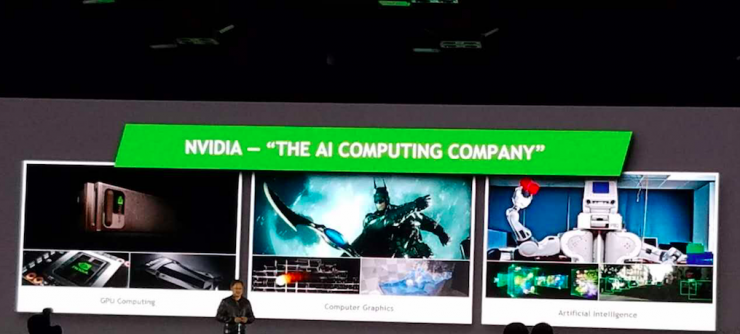
GTC (GPU Technology Conference) has been held in the United States since 2009, and each conference can arouse fanaticism among gamers and fans around the world.
Outside the United States, GTC came to China for the first time this year . Huang Renxun told us that because the entire Internet industry in China is growing rapidly, there are about hundreds of thousands of developers and the Chinese software industry ranks second in the world, so the GTC should come to China.
Obviously, Nvidia attaches great importance to the Chinese market. Tesla P4 and Tesla P40, reasoning accelerators designed for deep learning, and Drive PX2 for Auto Cruise, a low-power computer developed specifically for autonomous driving and automotive artificial intelligence, were all launched in China the same day.
Nvidia caught up with a good time. GPU computing is becoming a big market and is no longer confined to researchers only. Artificial intelligence, VR, games, and autopilot have caused explosive growth in the number and number of GPU computing applications. In response to the times, at the GTC China speech, Nvidia CEO Jen-Hsun Huang emphasized to the outside world: "We are no longer a semiconductor company but an AI Computing Company."
Previously, developers could use GPUs to create virtual worlds for games and designs for storytelling, including making movies. Now because of deep learning, Nvidia naturally talks about entering another field - artificial intelligence.
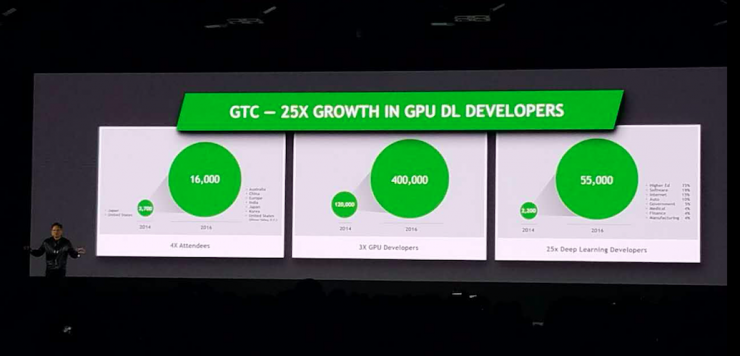
Huang Renxun mentioned on the GTC that 16,000 people participate in the GTC this year. Developers who downloaded the SDK grew 3 times to 400,000 developers. Deep learning developers have grown 25-fold within two years, and developers who have downloaded deep neural network lab engines have now grown 25-fold and downloaded 55,000 times. AI researchers come from all over the world and all laboratories now use NVIDIA's GPU platform for their own AI research. There are software companies, internet software providers, internet companies, automobile companies, governments, medical imaging, finance, Manufacturing and so on.
Huang Renxun's assessment is: "The field of intensive learning using GPU is very wide now. (This is very great.) Six years ago he began to push Nvidia into the direction of deep learning and artificial intelligence. Now he is investing all his efforts in AI calculations. Become an "artificial intelligence computing company" and Nvidia wants to make itself even cooler.
After the keynote speech of Huang Renxun on the morning of September 13, Nvidia held an exclusive interview with the media, allowing many media to communicate face-to-face with Huang Renxun. The following content was organized by Lei Fengnet (search for “Lei Feng Net†public number) (with deletion) :
Talking about autopilot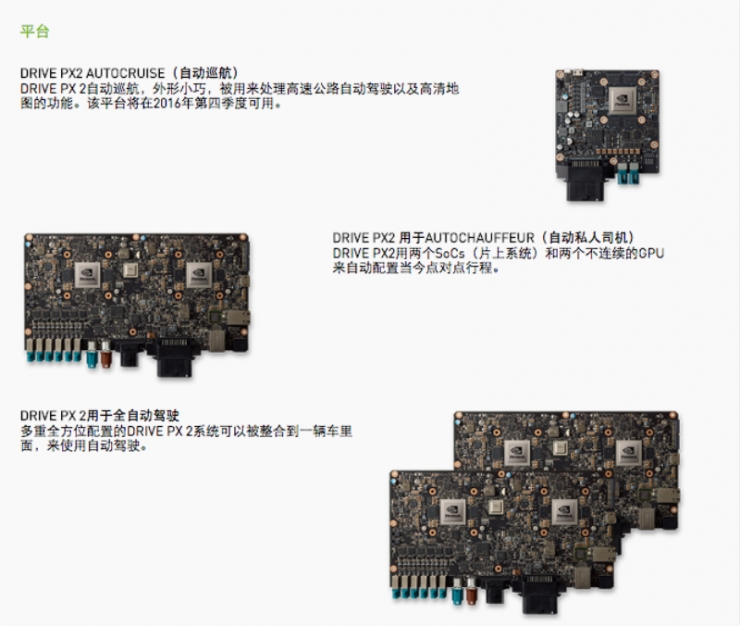
Q: When will a self-driving car equipped with a PX2 be available?
Huang Renxun: There are different types of autopilot (Auto Cruise, Auto Chauffeur, Full Autonomy) based on the PX2.
Such as taxis and shuttle buses, down passenger cars, to achieve automatic driving on the highway. I just talked about the two ends. In the middle, I called it AutoChauffeur. It's like a driver. Just tell it where you are going and the car will automatically take you to your destination.
In these three different levels of automated driving, we are all working with different car manufacturers around the world. Now we see that fully automated taxis have been road tested in different cities in some countries. Baidu currently conducts related tests in California and nuTonomy is tested in Singapore. Baidu may also conduct tests in China soon.
The fully automated taxi has been tested on the road and is supported by the Drive PX2. I think that Auto Cruise's self-driving cruise on the freeway should be available next year. I think AutoChauffeur still needs some time, it may take 2 to 3 years.
Q: What is the current status of AI technology in the automotive industry in Nvidia's technology system? What are the ideas and plans for Nvidia in this field in the future?
Huang Renxun: Our company is becoming an AI computing company. This technology is called AI computing. This technology can bring a lot of benefits. First of all, in terms of cloud Internet services, today we release new cloud reasoning accelerators: P40, P4. . This is a new market for us and has great potential. From the point of view of the number of questions asked by Internet users every day, the number of Internet artificial intelligence queries will be very large. Just talking about AI Internet.
The second is the AI ​​city. Cities are becoming more and more intelligent because there are many cameras, microphones, and speakers in the city. In the future, if you are in the street, just ask a question. Maybe the city will answer you automatically. There will be 1 billion cameras in 2020. Today we have released the TX-1, which will be a good computing platform for the Internet and many cameras in the AI ​​City.
The transportation sector is a $10 trillion market. As an artificial intelligence computing company, we believe that throughout the transportation industry, we can use AI to help achieve a very big change and make transportation more secure. The issues involved here are very complex and challenging. We understand AI. We can create a lot of value here, because we are the only company that launches AI on-board computers. For society, AI traffic will be very meaningful.
For now, the gaming division is also very exciting. In the future, we can use AI to generate the entire country, mountains and cities. Naturally, simulations can also be performed with AI.
AI has a very wide range of applications. I am very excited about its potential. We are very willing to use AI to solve major social problems. I believe that AI in the automotive industry has great application prospects.
Q: What exciting projects will Nvidia launch in driverless driving?
Huang Renxun: I think that in terms of smart travel or autonomous driving, our biggest priority is to turn cars into artificial intelligence , not just ADAS but real AI.
In the future we get into the car and we can talk directly to the car. Before I sit down, the car can identify me, adjust the seat position accordingly, and the interior temperature. No car keys are needed in the future, because the car knows me. When I sit down, the car will ask me where I want to go today. In my imagination, I talked to me just like a beauty.
After getting on the road, the car asked me if I wanted to listen to music, listen to the radio or call someone's phone. After I arrived at the destination, I got off and the car found a place to park on my own. Very natural, very much like a person.
So this is our key priority in the automobile, turning the car into AI. This may allow us to work hard in the next 10 years.
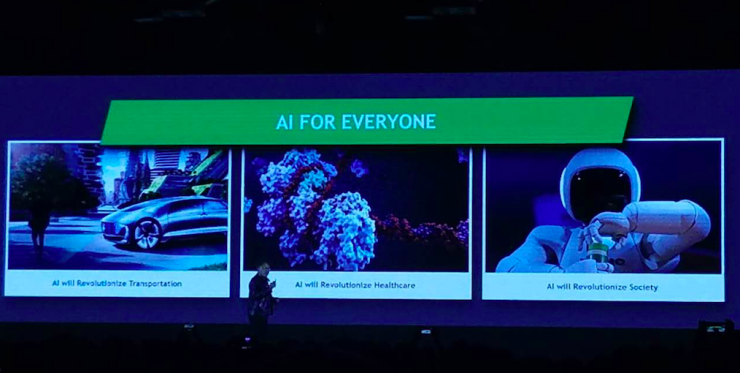
Q: Nvidia's products are continuously introduced. How can we promote the formation of AI ecology? Is there a corresponding investment plan?
Huang Renxun: We cooperate with AI researchers and universities. For AI commercial use, the earliest users are Internet companies with large data sizes because they have huge amounts of data and they serve hundreds of millions of consumers.
Every user and Internet user is different. They all hope that the Internet can provide the best answer. Obviously the only solution is to use artificial intelligence. Based on the artificial intelligence system of the cloud computer, you can understand each person's characteristics and needs.
So naturally, these Internet companies are the most important group in the commercialization of artificial intelligence, including our cooperation with Google, and Microsoft is also very open with our cooperation. Facebook has cooperated with us and they have established GPU servers. The data center also includes companies such as eBay, Netflex, and YouTube, and Baidu, Alibaba, Tencent, HKUST, and iQiyi cooperate with us in China. The big internet companies you can think of all have cooperation with us.
Another group that uses AI calculations is a startup. There are more than 1,500 companies worldwide and they are start-ups based on artificial intelligence technology. We have a project for startups called Inception. Through this project, more than 700 start-up companies have cooperated with us. These startups hope to use Nvidia Technology first.
Participating in the Inception project provides start-ups with the following benefits: access to our technology, expert support, access to marketing platforms, access to markets in different countries, and access to potential investment opportunities.
Q: As far as the current situation is concerned, mobile Internet will be replaced by artificial intelligence, becoming the next growth point of the Internet and an irreversible trend. In what way will Nvidia play a role? What plans will Nvidia have for corporate and consumer markets?
Huang Renxun: Artificial intelligence is a complement to the mobile Internet, not that the mobile Internet will disappear. In the past decade, many applications for smartphones have not been developed. Many applications require artificial intelligence to provide assistance and support. In the future, more and more mobile phone services and applications may need AI to provide support behind the scenes, including all aspects of life.
Apps used on mobile phones, such as recommended restaurants, recommended movies or music service apps, have recommendation engines behind them to provide support. The recommendation engine needs training and requires artificial intelligence training. Then provide these recommended services, many also have GPU behind to provide support.
First we need to train on these networks. We need a large number of data samples. We also need very large computing resources. We train the network and we can run on different devices, such as mobile phones, set-top boxes, cars, drones, and robots. Or it is a networked camera or a home temperature controller, etc. A large number of IoT smart terminals can run a trained network.
For the SMB market, I think that the ability to have GPUs in the cloud now will enable these companies to gain the ability to rely on their own inability to obtain. In the past, Wu Enda mentioned that in Baidu’s multi-billion-dollar data center, a full-scale architecture is under way. The transformation, so that you can use the GPU better, such an approach is unlikely to be implemented for SMEs. However, SMEs can fully use such capabilities as Alibaba Cloud, Amazon Cloud Services or Microsoft Azure Cloud Services, IBM Cloud Computing, etc., and then use the GPU.
Our strategy is that they have Nvidia GPUs in the cloud and we have a computing platform for our AI. Another is that for medium-sized companies, we want to create some very simple AI devices for them if we want to have computing power internally. That is our DGX-1 product now.
For consumer products, my personal favorite consumer product is a car. For the car category, it is Drive PX2. There are also companies in China who are developing consumer-grade robots, such as providing services at home, pouring tea, cleaning, etc. This home-grown robot will also appear in the future. This type of consumer product has Jetson TX- 1. It is a very small AI computer with low power consumption but powerful performance.
Q: When you created Nvidia, you shouldn’t have imagined that Nvidia would become an artificial intelligence company. So what do you think about the impact or role of GPUs in artificial intelligence?
Huang Renxun: The main focus of Nvidia's company should be a relatively special part of the computing field. Performance is very important in this part. We never thought of doing common calculations and basic calculations. This is not our mission.
We have to calculate the type of acceleration calculation, the largest market for accelerated computing is the graphics of the game. Other accelerating calculations include areas such as industrial design, film production, CAD, etc., which are very computationally intensive, and we believe there is great potential for growth.
We did not foresee the emergence of deep learning that made AI possible. But when I first learned about deep learning and learned about deep learning, I began to realize that this application is very important for the future, and it is a perfect application area for GPU accelerated computing.
This is why I started to move Nvidia to deep learning and artificial intelligence about six years ago. Because I see many markets, AI will have a very big influence. With our own capabilities, we have a responsibility to ensure that we can further promote the development of AI. In general, we may not see it at the beginning, but we believe that AI is indeed the most perfect for our GPU accelerated computing. So we are now fully investing in AI calculations.
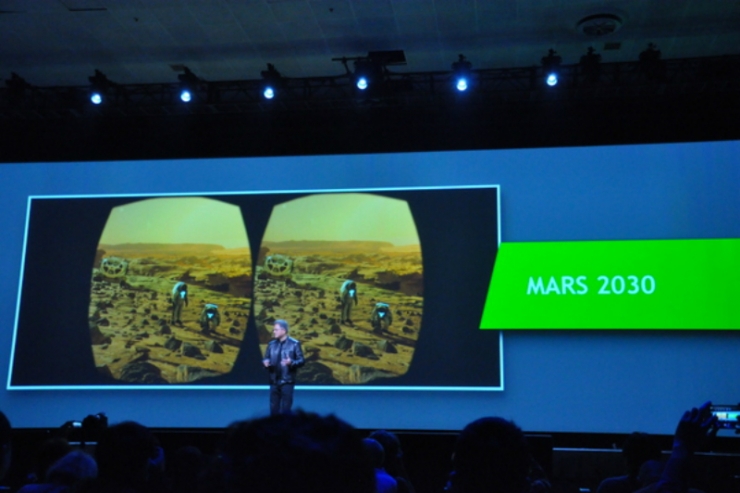
Talk about VR
Q: In addition to the SDK, what is the role of Nvidia in promoting the development of VR?
Huang Renxun: First of all, we have to make a very good GPU for VR. VR is very different from traditional computer displays. Pascal is the first graphics architecture designed for VR.
VR not only needs to simulate graphics very quickly, but also needs to simulate the entire virtual world. In VR vision, it needs to interact with the virtual world in the real world, not only fast but also beautiful. The relationship between objects should conform to our physical principles of the real world.
We need to cooperate better with the manufacturers that produce the related VR devices. We created corresponding SDKs and APIs to make these head-mounted displays more responsive and allow the controllers to interact with each other very realistically.
We also need to help those game developers and let them design VR games with better experience. Because VR games are very different from our traditional games, we developed Fanhouse VR games and open source it to all developers. Groups, they can learn and inspire them to develop games with a better VR experience.
Finally, we need to allow consumers to try VR and experience VR. We work with VR companies and related development companies to bring these VR products to Internet cafes and shopping malls so that consumers can experience it because they can experience and enjoy VR. Only really willing to use VR.
AGV Battery Charger is a new generation of high-tech products with advanced technology, stable performance, novel shape, high intelligence, high efficiency and reliability of charging.It will be high frequency technology, microcomputer control technology and advanced charging technology organic combination, so that the battery to achieve the best charging effect, effectively extend the battery cycle life.AGV battery charger is suitable for various conventional battery charging, equalizing charge maintenance, at the beginning of charging, floating charge and forced to activate charging and other occasions, AGV battery charger is electric truck, electric lift car, electric pallet truck, stacker, golf carts, electric touring all sorts of small electric vehicle battery such as users and small and medium-sized generator start-up battery is the most ideal choice.
Intelligent Charger,Agv Rapid Battery Charger,Intelligent Battery Charging System,Agv Charger
Xinxiang Taihang Jiaxin Electric Tech Co., Ltd , https://www.chargers.be